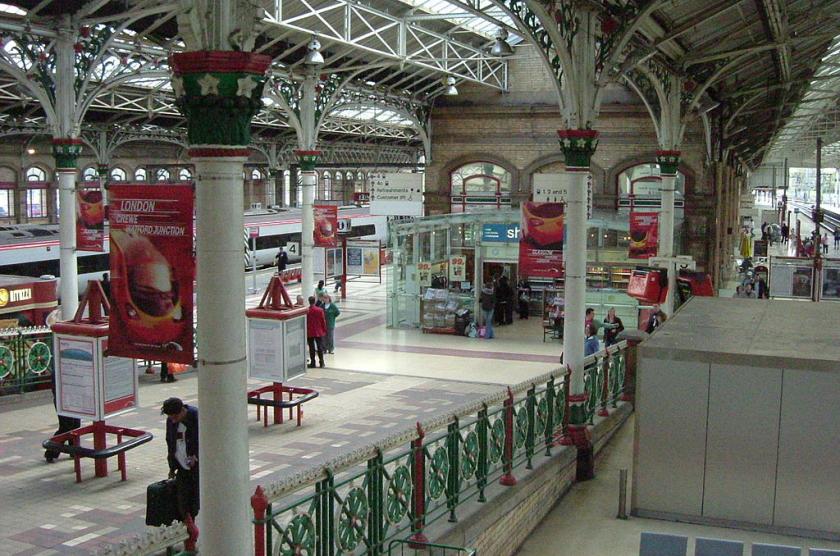Preston Railway
- Preston Rail Station
- Preston Railway Station Postcode
- Preston Railway
- Preston Railway Journeys
- Preston Railway Sleepers
Lancaster and Preston Junction Railway
Preston Lancashire PR1 8AP Note. For information on how to get to the car park, plus work out the cost of your stay visit the Avanti West Coast website. Different rates apply to non rail users, please speak to a member of staff. Opening hours Monday - Sunday 24 Hours a Day Number of spaces 1025 with 12 accessible spaces available. Preston's fourth railway was the Preston and Wyre Joint Railway to Fleetwood, opening, just a few weeks after the L&PJR, on 16 July 1840, to its own terminus at Maudlands in Leighton Street. After 12 February 1844, regular Preston and Wyre trains used the North Union station, along with the L&PJR, although Maudlands Station continued to be used.
From Graces Guide

The Lancaster and Preston Junction Railway was an early British railway company. It later merged with the Lancaster and Carlisle Railway.
1837 The Lancaster and Preston Junction Railway Company (L&PJR) was created by Act of Parliament on 5 May 1837, to link the town of Preston to the city of Lancaster. The company planned to build its Preston terminus at Dock Street (off Pitt Street), near the Lancaster Canal, in the expectation that the rival North Union Railway (NUR) line from Wigan would have its terminus close by. In fact, the North Union built its station 200 yards away, just south of Fishergate, in what seems to have been a tactical move to get the L&PJR to contribute towards the cost of a short tunnel and connecting line between the two railways. This marked the start of protracted feuding between the two companies for years to come. Eventually a deal was struck for the L&PJR to use the North Union station.
The Lancaster terminus was on the modern-day South Road, just south of the Lancaster Canal and the southern end of Penny Street.
The line was twenty miles long and built by Joseph Locke. It opened on 25 June 1840, with a passenger service from the following day.
Preston Rail Station
Traffic was at first disappointing, due to competition from the parallel Lancaster Canal, which lowered the fares on its packet boats. The canal passed much closer to the town of Garstang than the railway.

Preston Railway Station Postcode
The Manchester, Bolton and Bury Canal Navigation and Railway, which was already supplying the L&PJR's locomotives, agreed to work the line. This would have allowed direct trains from Manchester to Lancaster, in competition with the NUR line. The NUR retaliated by charging a toll to use the connecting line between the L&PJR and NUR. The L&PJR refused to pay a toll to use a line that it had partly paid for. Instead, it struck a deal with the Bolton and Preston Railway (BPR) to use its Maxwell House Station near Dock Street, from 1 Jan 1842 (some 18 months prior to completion of the BPR's own line).
Through trains between Lancaster and the south were levied a toll of 6d per passenger. Most passengers refused to pay, preferring to walk between the Maxwell House and North Union stations. The NUR refused to hold connections to allow time for passengers to walk and rebook, and advised northbound passengers to use the Lancaster Canal instead of the Lancaster railway.

Preston Railway
1842 The L&PJR, in increasing financial difficulties and unable to interest other railway companies, took the unprecedented step of leasing its line to a canal company, namely the Lancaster Canal. This occurred on 1 September 1842, after which the canal company withdrew its packet boat service.
In 1844, the Bolton and Preston Railway was amalgamated into the North Union Railway. Maxwell House Station thus came under the control of the NUR, and the L&PJR were denied access. Hapless passengers had to alight on the track-side at Dock Street, until later that year when L&PJR trains were allowed, once more, to use the North Union station in Preston. Maxwell House Station continued to be used for excursions.
A dispute between the L&PJR and the Lancaster Canal Company led to an agreement that the Lancaster and Carlisle Railway (L&CR) would lease the line from 1 July 1846. However, shareholders reversed this decision, resulting in the mass resignation of all the directors. In the resulting confusion the L&CR and the canal company both ran their trains on the L&PJR line. The competition forced the canal company to reduce its train fares. The L&CR had its own station at Lancaster Castle and its line joined the L&PJR line a short distance south of the L&PJR station.
In 1847, the East Lancashire Railway (ELR) tried to lease the line, but was unable to establish the legality of any agreement in the absence of a board of directors.

On 21 August 1848 a Euston to Glasgow express train ran into the back of a stationary train at Bay Horse Station, resulting in one death and several serious injuries. The subsequent enquiry laid part of the blame on the uncertainty over the ownership of the line. Eventually the canal company accepted compensation to relinquish its use of the line. A struggle ensued between the L&CR and ELR, resulting in the L&CR leasing the line from 1 August 1849.
The L&PJR was amalgamated into the L&CR in 1859 and the L&CR was leased to the London and North Western Railway (LNWR), which later absorbed it in 1879.
Preston Railway Journeys
See Also
Sources of Information
- [1] Wikipedia
